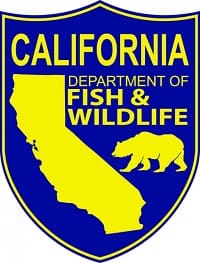California Wildlife Conservation Board Funds Environmental Improvement and Acquisition Projects

At its Nov. 21 quarterly meeting, the Wildlife Conservation Board (WCB) approved approximately $14.4 million in grants to help restore and protect fish and wildlife habitat throughout California. Some of the 14 funded projects will provide benefits to fish and wildlife – including some endangered species – while others will provide the public with access to important natural resources. Several projects will also demonstrate the importance of protecting working landscapes that integrate economic, social and environmental stewardship practices beneficial to the environment, land owners and the local community. The funds for all these projects come from bond initiatives approved by voters to help preserve and protect California’s natural resources. Some of the funded projects include:
- A $563,000 grant to Central Coast Salmon Enhancement for a cooperative project with the California Department of Fish and Wildlife’s Fisheries Restoration Grant Program and the County of San Luis Obispo, to improve fish passage on Pismo Creek, six miles south of San Luis Obispo.
- A $681,000 grant to the Tahoe City Public Utilities District for a cooperative project with the North Lake Tahoe Resort Association to rehabilitate the boat ramp at the Lake Tahoe Public Access Facility on Lake Forest Road, two miles northeast of Tahoe City in Placer County.
- A $4.8 million grant to the East Contra Costa County Habitat Conservancy (ECCCHC) and the acceptance of two U.S. Fish and Wildlife Service Habitat Conservation Planning Acquisition grants. The intention is to sub-grant these federal funds to the ECCCHC for a cooperative project with the East Bay Regional Park District to acquire approximately 1,885 acres of land for the protection and preservation of existing regional wildlife linkages, including grassland and oak woodland savannah habitat areas within the East Contra Costa County Natural Community Conservation Plan/Habitat Conservation Plan in the Diablo Mountain Range, above the City of Antioch.
- A $2.3 million grant to the California Waterfowl Association to acquire approximately 1,670 acres of land for the purpose of protecting wetlands and associated upland habitat areas in the Goose Lake watershed. This area in the Pacific Flyway migratory bird corridor in the southern end of the San Joaquin Valley, south of the City of Wasco in Kern County, supports numerous migratory birds and threatened and endangered species.
- Two grants worth $607,250 to the City of Rancho Palos Verdes and the acceptance of a U.S. Fish and Wildlife Service Habitat Conservation Planning Acquisition grant and the approval to sub-grant these federal funds to the City to acquire two separate properties, approximately 16 acres and 42 acres in size, for the protection and preservation of existing regional wildlife linkages and species located within the Ocean Trails Habitat Conservation Plan and the pending Natural Community Conservation Plan.
- A $1.2 million grant to the San Diego County Department of Parks and Recreation for a project to construct and rehabilitate trails, provide signs and trailhead facilities, and restore approximately 15 acres of coastal sage habitat on the south side of the Tijuana River Estuary, three air miles south of Imperial Beach in San Diego County.
For more information about the WCB, please visit www.wcb.ca.gov.

